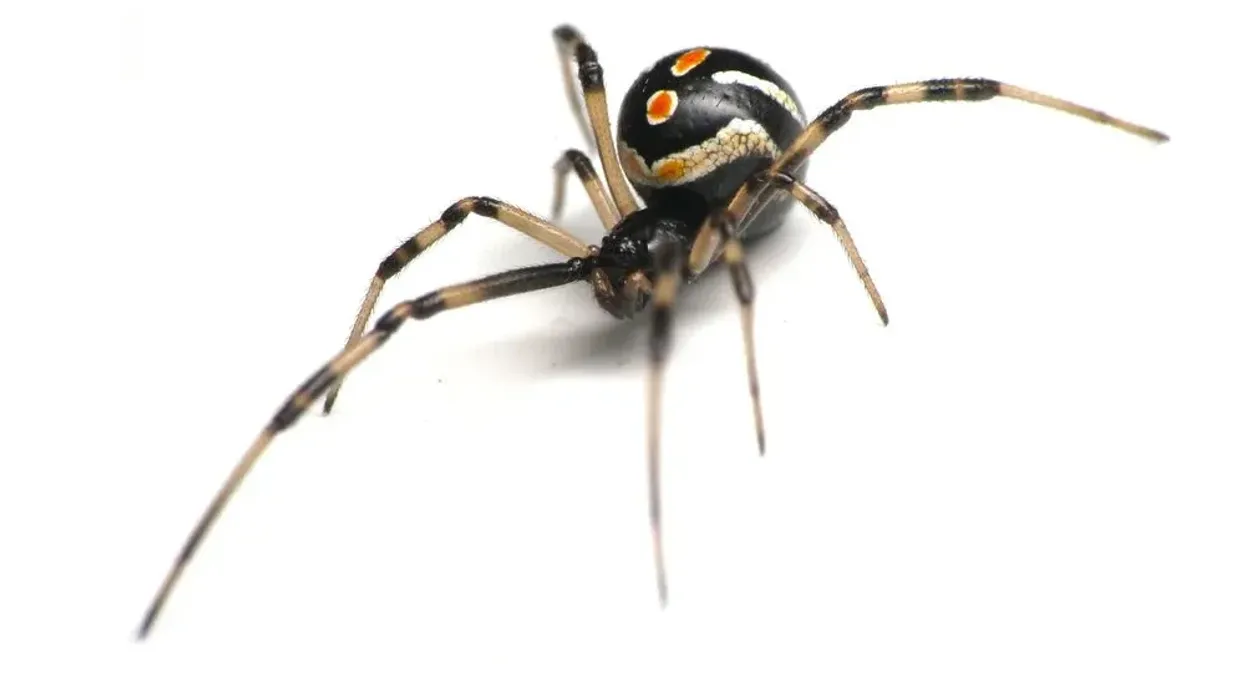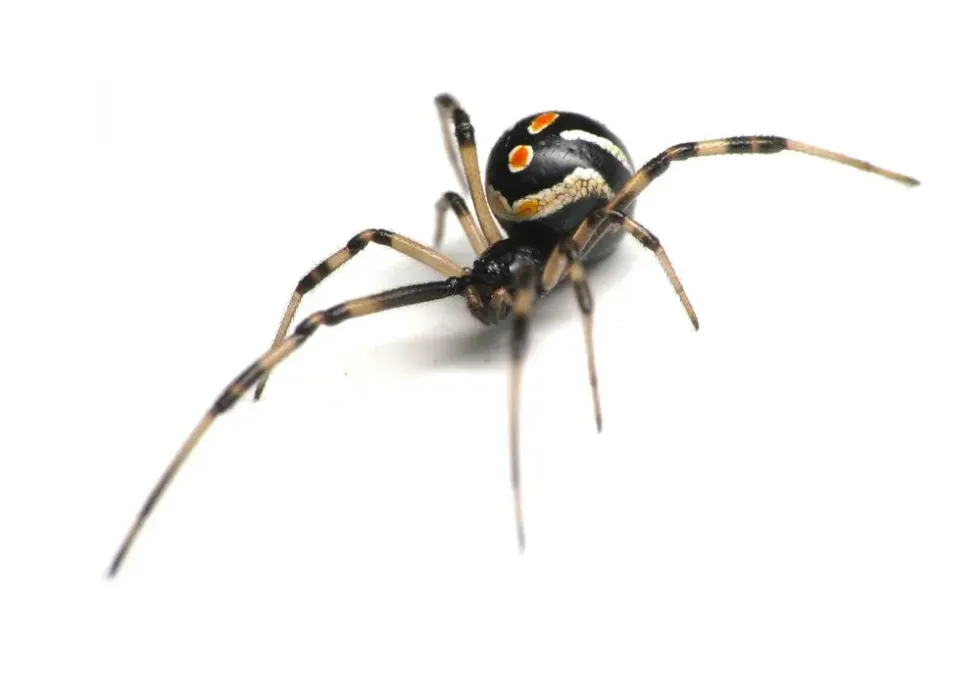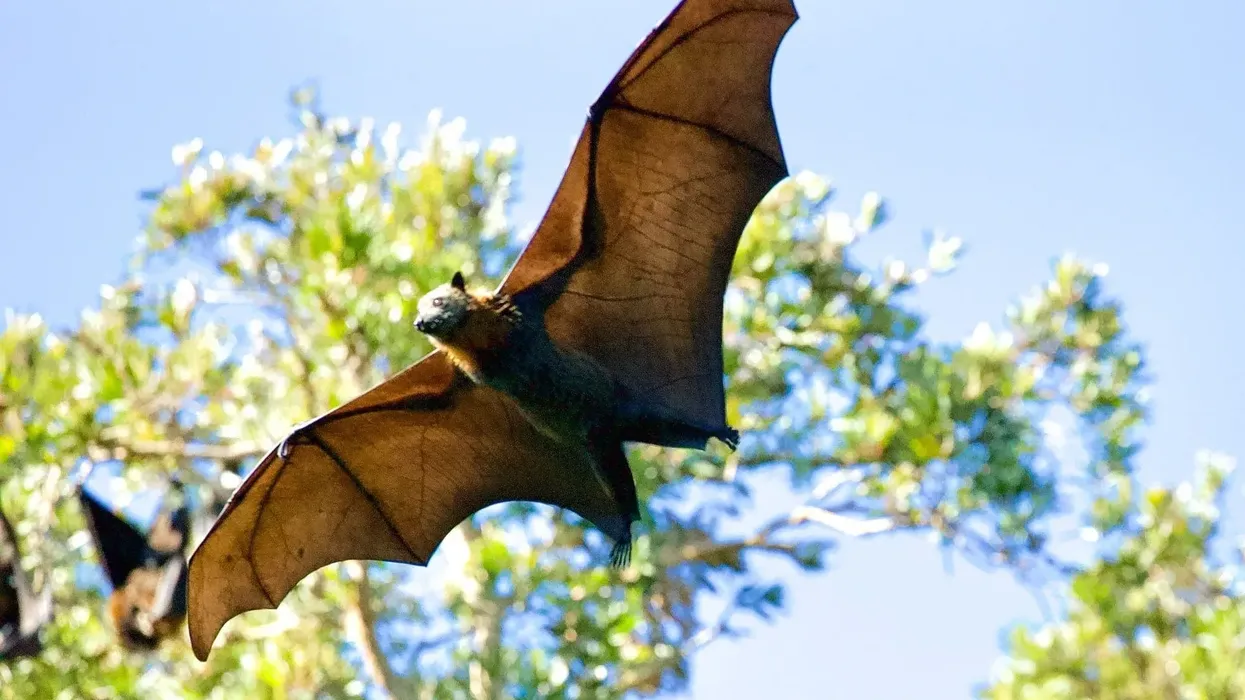Are you ready to be introduced to one of the toughest and most venomous creepy-crawlies, the northern black widow? This species is found abundantly in North America in dark cornered places, especially in Florida, and in Canada.
You can spot them by the distinctive red hourglass mark on the lower side of their abdomen, but it's best to stay far from them because just one bite has enough venom to cause swelling, chills, fever, or even chest pain in humans.
This spider from the family Theridiidae has peculiar looks and peculiar mating habits, such as the cannibalistic behavior of the female black widow who eats her partner to fulfill her hunger requirements! This is the reason for the spider's name, black widow.
If you want to learn more northern black widow spider facts, then read on to find some more exciting details about this poisonous spider! And if you like this, then don't forget to check our articles on the spotted orb-weaver spider and the Bolas spider; we're sure you'll find just them as interesting!
Northern Black Widow Interesting Facts
What type of animal is a northern black widow?
The northern black widow is a deadly and poisonous spider.
What class of animal does a northern black widow belong to?
The northern black widow belongs to the Arachnida class of animals as they have their skeleton outside their body. These animals are known as arachnids and shouldn't be confused with insects as their features are quite different.
How many northern black widows are there in the world?
About 32 species of this deadly species are known around the world.
Where does a northern black widow spider live?
You'll find the northern black widow in cornered places in a farm or house, usually in places with temperate climate conditions. They are mainly found in North America.
What is a northern black widow's habitat?
The Latrodectus variolus has a preference to create its web in dark and dry sheltered places such as rodent holes, basements, barns, blankets, and even shoes! In fact, you might be able to spot them in woodpiles at your house of firewood, so beware!
Who do northern black widows live with?
The Latrodectus variolus is a shy animal that lives alone except when mating.
How long does a northern black widow live for?
This black widow spider has a varying lifespan for females and males. Female Variolus spiders live for about three years while a black male widow merely lives for three to four months.
How do they reproduce?
The reproduction process of black widows takes place in a web created by a male black widow once he matures. Males spin a web where the female later deposits her eggs in a silk-like container that is camouflaged and protected. The eggs are incubated for 20-30 days, and about 100 spiderlings hatch out later.
What is their conservation status?
Black widow spiders are present in abundant numbers worldwide, hence their conservation status is Not Evaluated.
Northern Black Widow Fun Facts
What do northern black widow spiders look like?
Northern black widows can be spotted by their noticeable shiny black skin and the red hourglass marking under their abdomens. This red marking is a warning sign to predators and attackers.
How cute are they?
The northern black widow spider, although a venomous creature, is quite 'shy' in nature. In fact, male and female black widows only meet once to breed. Despite this, their deadly potential means that this spider is not at all cute.
How do they communicate?
Northern black widow spiders use their web to communicate with each other. The black widow's web is messy compared to the uniform spiral web of the other spiders as these webs are used to communicate via the female's pheromones that are emitted.
How big is a northern black widow?
The average northern black widow size is approximately 0.5 - 0.6 in (1.2 - 1.6 cm) in length. Females can grow even bigger, up to 1.5 in (3.81 cm), and are bigger than males. Black widow spiders are four times bigger than an average ant.
How fast can a northern black widow move?
Northern black widows spend most of their life clinging to their cobwebs, so their legs are adapted to hang onto their web effectively, rather than for speed. Due to this, they are quite slow while moving or running on the ground, but on their webs, no one can beat them for sure!
How much does a northern black widow weigh?
This species of Variolus spiders is a tiny, compact size and weighs about 0.03 oz (0.85 g). Females often weigh more than males.
What are their male and female names of the species?
There are no gender-specific names for Latrodectus various spiders. Although they are smaller in size than females, males have longer legs.
Both of them have a rounded, brown shiny abdomen and are mostly black. If you are ever confused about identifying them, you can look for red spots and two crossed bars under the female's belly (but make sure not to get too close!).
These markings are characteristic of females and yellow spots can be found instead on a male northern black widow.
What would you call a northern baby black widow?
A baby Northern black widow has no particular name. They resemble their father when they are young and have tan legs with black straight stripes as well as a white abdomen with black spots. They are also completely harmless to humans when they are young!
What do they eat?
Like any other spider, the black widow spider eats other small creatures and insects trapped in its web. A female hangs her body upside down to show her red spots to warn predators that she is toxic.
Creatures that get trapped in a northern black widow spider's web include beetles, mosquitoes, caterpillars, flies, and grasshoppers.
After their prey is trapped, black widow spiders wrap the prey in silk using their 'comb feet.' They then puncture the prey with digestive enzymes to liquefy the corpse and later suck the liquid from the corpse.
Are they venomous?
The most venomous spiders found in North America are black widows. Still, it's female black widows, who are bigger in size and more aggressive, that we should be most careful of, as their bite can result in a fatality.
Would they make a good pet?
No, northern black widows are dangerous animals to keep as pets due to the strength of their venom. Northern black widow spider bites can, unfortunately, lead to fatalities so they are not a safe pet to own.
Did you know...
The venom injected from a northern black widow bite is 15 times more poisonous than the venom of a rattlesnake! This justifies the severe pain experienced post-bite, so it's best not to trouble these little creatures.
Another species of black widow is the Latrodectus hesperus, also known as the western black widow, which has equal amounts of venom in its bite. In fact, the western black widow has a feature that allows it to weave high tensile silk webs too!
How poisonous is the northern black widow spider?
A northern black widow spider bite contains venom that is toxic for humans and any other animals. Their bite feels like a pinprick at first and then the pain is felt within 30-60 minutes of the bite, and can symptoms can last up to 24 hours.
Sweating, nausea, and headache are common symptoms, and you can immediately see swelling at the site of the bite. Although deaths caused by their bite are rare, the pain could be severe and damaging for all age groups, so beware!
Northern black widow vs. southern black widow
Another variant of the black widow spider is called the southern black widow. If you compare the two, you'll find that both species are similar in size, but the southern black widow has a complete hourglass marking, while the northern black widow has a broken red hourglass marking or simply a sequence of red dots on its abdomen.
Here at Kidadl, we have carefully created lots of interesting family-friendly animal facts for everyone to discover! Learn more about some other arachnids including the tarantula, or the orb-weaver spider.
You can even occupy yourself at home by drawing one on our northern black widow coloring pages.










